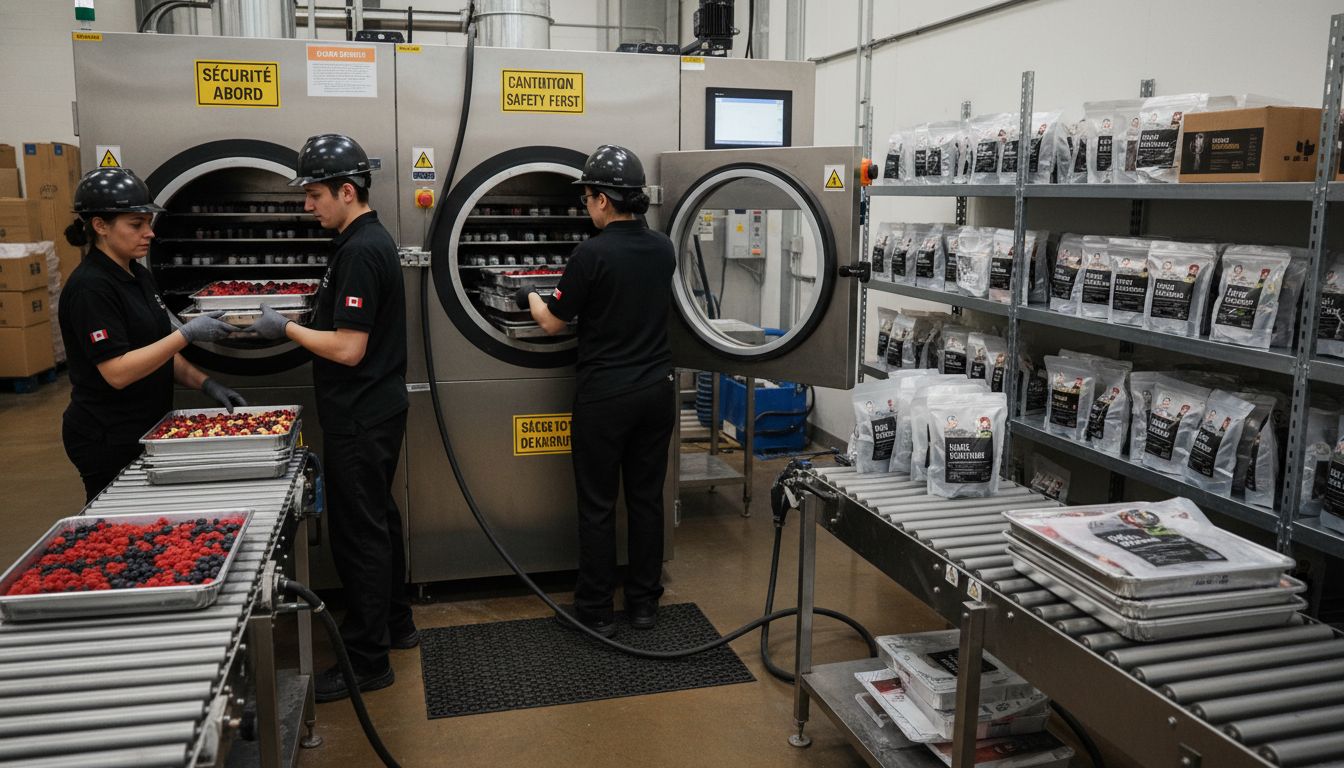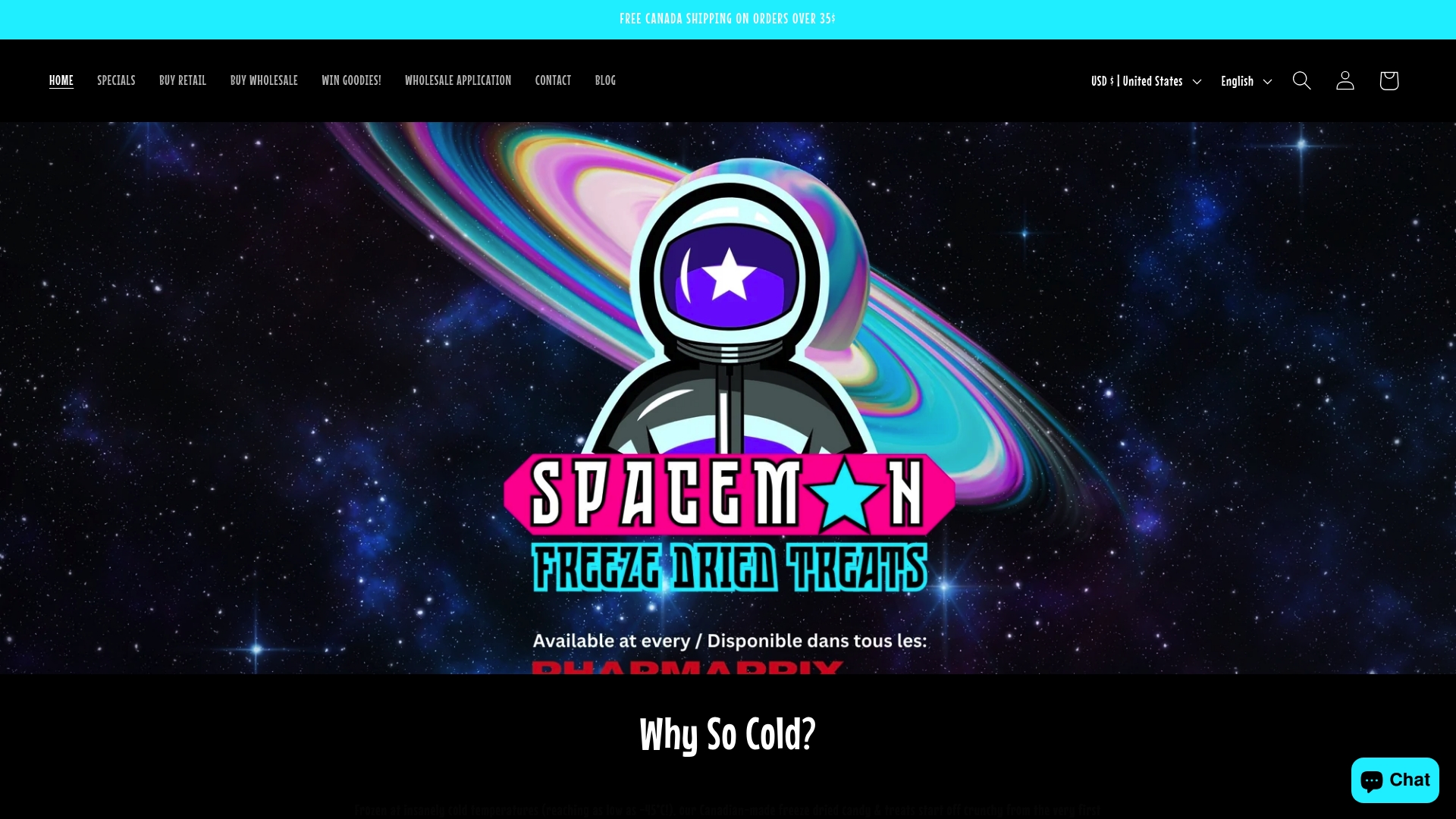Most people are surprised to learn that freeze drying can preserve food and pharmaceuticals for up to 25 years without refrigeration. This powerful process has changed the way industries maintain the quality and shelf life of sensitive products. By removing water in a unique way, freeze drying helps protect flavor, nutrition, and structure far better than traditional methods. Discover how this technique shapes everything from your favorite snacks to life-saving medicines.
Table of Contents
- What Is Freeze Drying? Core Concepts Explained
- Types of Freeze Drying Processes and Techniques
- How Freeze Drying Preserves Flavor and Nutrition
- Shelf Life, Storage, and Cost Advantages
- Freeze Dried Products in Retail and Manufacturing
Key Takeaways
| Point | Details |
|---|---|
| Preservation Technique | Freeze drying (lyophilization) preserves sensitive materials by removing moisture without heat, maintaining product integrity and nutritional value. |
| Process Stages | The process involves freezing, primary drying, and secondary drying, utilizing a vacuum to sublimate ice directly into vapors. |
| Shelf Life Advantages | Freeze-dried products can have a shelf life of up to 25 years without refrigeration, making them economically advantageous for storage and transport. |
| Industry Applications | Key sectors utilizing freeze drying include food (instant meals, snacks) and pharmaceuticals (medicines, vaccines), enhancing product quality and extending usage. |
What Is Freeze Drying? Core Concepts Explained
Freeze drying is a fascinating preservation technique that transforms how we think about storing and maintaining the quality of sensitive materials. According to Nature Research, freeze drying (also called lyophilization) is an advanced dehydration method used across multiple industries including pharmaceuticals, food production, and biological sciences.
At its core, the process involves three critical stages: freezing, primary drying, and secondary drying. As PubMed Research explains, this technique uniquely crystallizes a product’s solvent at extremely low temperatures and then sublimates the ice directly from solid to vapor phase. This means water is removed without passing through the liquid state - a game-changing approach that preserves the material’s original structure and properties.
The magic of freeze drying lies in its ability to maintain product integrity. Unlike traditional dehydration methods that can damage or alter materials through heat, freeze drying operates under controlled vacuum conditions. This allows for remarkable preservation of:
- Nutritional content
- Cellular structures
- Flavor profiles
- Molecular composition
While freeze drying might sound complex, our comprehensive guide on freeze drying benefits breaks down how this technology is revolutionizing preservation across multiple sectors. From protecting sensitive pharmaceutical compounds to creating lightweight, shelf-stable food products, freeze drying offers an innovative solution for maintaining quality and extending product lifecycle.
Types of Freeze Drying Processes and Techniques
Freeze drying encompasses several sophisticated techniques that have evolved dramatically with technological advancements. According to Nature Research, modern freeze drying processes now incorporate advanced computational methods like fluid dynamics and mechanistic modeling to understand thermal gradients and optimize each stage of preservation.
Two primary freeze drying approaches dominate the industrial landscape. FJPS Research highlights two key methods: shelf freeze drying and manifold applications. Shelf freeze drying involves strategically placing product vials on specialized shelves, utilizing precise heat transfer mechanisms through conduction or radiation to meticulously regulate the drying process.
The primary freeze drying techniques include:
- Manifold Freeze Drying: Best for smaller batch sizes and research applications
- Shelf Freeze Drying: Ideal for large-scale industrial production
- Rotary Freeze Drying: Used in continuous processing environments
- Tray Freeze Drying: Common in food and pharmaceutical industries
For those looking to dive deeper into specific freeze drying applications, our comprehensive guide on what you can freeze dry provides extensive insights into the practical implementation of these cutting-edge preservation techniques. Each method offers unique advantages depending on the specific material, industry requirements, and desired preservation outcomes.

How Freeze Drying Preserves Flavor and Nutrition
Freeze drying represents a groundbreaking preservation technique that goes far beyond traditional food processing methods. According to Dietetics Academy, this innovative process uniquely preserves cellular structure, allowing foods to maintain their original shape, flavor, and nutritional integrity in ways conventional drying techniques simply cannot match.
PubMed Research highlights that freeze drying is particularly effective for thermolabile materials, producing dry products with exceptional quality attributes. By removing moisture through sublimation, the technique prevents chemical and structural breakdown that typically occurs with heat-based preservation methods.
The remarkable preservation process works through several key mechanisms:
- Instant freezing at ultra-low temperatures
- Vacuum extraction of moisture
- Molecular structure retention
- Minimal nutritional degradation
Nutritional benefits of freeze drying include:
- Maintaining up to 97% of original nutrient content
- Preventing oxidation and bacterial growth
- Extending product shelf life dramatically
- Preserving original color and texture
For those curious about exploring the world of freeze-dried foods in more detail, our comprehensive guide to foods you can freeze dry offers an in-depth look at the incredible versatility of this preservation technique. From fruits and vegetables to entire meals, freeze drying opens up a world of culinary possibilities while maintaining exceptional quality and nutritional value.
Shelf Life, Storage, and Cost Advantages
Freeze drying represents a revolutionary approach to product preservation, offering unprecedented advantages in shelf life and storage efficiency. According to Nature Research, this technique maintains the structural integrity and activity of sensitive materials, enabling extended storage without requiring refrigeration - a game-changing capability for businesses and consumers alike.
PubMed Research notes that while freeze drying is complex, it can be incredibly cost-effective when process and formulation variables are carefully optimized. The economic benefits extend far beyond simple preservation, creating significant value across multiple industries.
Key shelf life and storage advantages include:
- Extended Product Longevity: Up to 25 years of stable storage
- No Refrigeration Required: Room temperature storage possible
- Minimal Quality Degradation: Maintains original product characteristics
- Reduced Transportation Costs: Lightweight and compact
Cost advantages manifest in several critical areas:
- Reduced spoilage expenses
- Lower storage infrastructure investments
- Decreased transportation and handling costs
- Minimal product weight and volume
![]()
For those interested in exploring long-term storage solutions, our guide on essential long shelf life snacks provides additional insights into maximizing product preservation and economic efficiency through advanced preservation techniques.
Freeze Dried Products in Retail and Manufacturing
Freeze drying has revolutionized product development across multiple industries, transforming how manufacturers approach preservation and retail packaging. According to Nature Research, this technique is an essential dehydration method deployed across pharmaceutical, food, and biological industries to preserve sensitive materials with unprecedented precision.
Dietetics Academy highlights remarkable examples of freeze-drying applications, such as instant coffee production, where manufacturers can create products that retain original flavor and aroma. This breakthrough allows businesses to offer high-quality, lightweight, and long-lasting products that meet increasingly sophisticated consumer demands.
Key sectors leveraging freeze-dried products include:
-
Food Industry
- Instant coffee and tea
- Preserved fruits and vegetables
- Lightweight camping/emergency meals
- Gourmet snack production
-
Pharmaceutical Sector
- Medication preservation
- Vaccine storage
- Biological sample maintenance
- Medical research materials
For entrepreneurs and retailers interested in exploring the potential of freeze-dried products, our comprehensive guide to wholesale freeze-dried candy provides detailed insights into market opportunities and product development strategies. The freeze-drying revolution is transforming how we think about product preservation, offering unprecedented quality, shelf life, and innovation across industries.
Unlock the Full Potential of Freeze Drying for Your Products
Understanding the intricate process of freeze drying and its unbeatable benefits is just the first step. If you are facing challenges like maintaining product flavor, extending shelf life, or preserving critical nutrients while reducing costs and storage needs, we have the solutions tailored for you. Our expertise in freeze dried candy manufacturing and distribution in Canada means you can harness advanced preservation techniques to deliver exceptional quality products your customers will love.
With Space-Man, you gain access to:
- Private labeling and co-packing services that bring your freeze dried creations to market quickly and professionally
- Custom bagging and packaging solutions that safeguard product integrity and enhance shelf appeal
- A trusted B2C online platform delivering freeze dried goods directly to consumers across Canada

Ready to elevate your offerings with the science-backed advantages of freeze drying? Visit Space-Man to explore our wholesale freeze-dried candy guide and learn how easy it is to get started with premium freeze dried products. Act now and secure your spot at the forefront of this preservation revolution.
Frequently Asked Questions
What is freeze drying and how does it work?
Freeze drying, or lyophilization, is a dehydration process that transforms materials through three main stages: freezing, primary drying, and secondary drying. It removes moisture by sublimating ice directly from solid to vapor, preserving the material’s structure and properties.
What are the nutritional benefits of freeze drying?
Freeze drying helps maintain up to 97% of the original nutrient content of foods, prevents oxidation and bacterial growth, and preserves the original color and texture, making it an ideal method for retaining nutritional value in food products.
How does freeze drying differ from traditional food dehydration methods?
Unlike traditional dehydration methods that often use heat and can alter the material’s quality, freeze drying operates under vacuum conditions, allowing it to preserve cellular structures, flavor profiles, and nutritional content without significant degradation.
What types of products can be freeze dried?
A wide range of products can be freeze dried, including fruits, vegetables, meals, and pharmaceutical compounds. Each product type benefits differently from freeze drying, making it an adaptable preservation technique across various industries.

